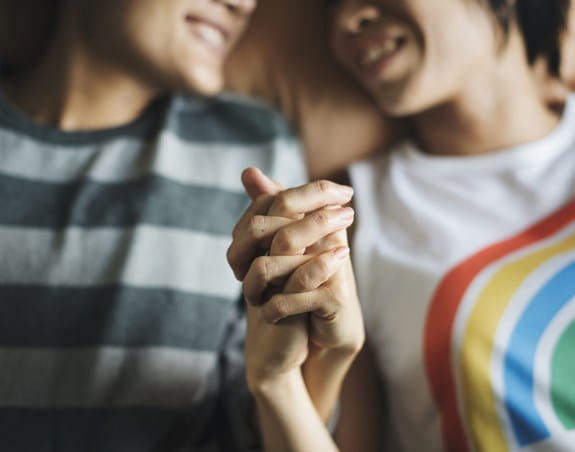Why should you get screened?
It's your decision
Like everybody else, lesbian, gay, bisexual, transgender (trans) and queer (LGBTQ) people need to be screened for breast, cervical and colorectal cancer. We know that LGBTQ communities are less likely to get screened than non-trans and heterosexual counterparts. This means that LGBTQ communities have a higher risk of dying from these cancers.
It may be difficult for members of LGBTQ communities to find health information that speaks to their realities. Sometimes a major barrier to getting screened for LGBTQ communities is that some healthcare settings aren’t inclusive or welcoming. Members of LGBTQ communities are less likely to have a primary healthcare practitioner and more likely to delay seeking medical care or screening because of actual or perceived discrimination.
They may face barriers to screening related to sexual orientation, gender identity and gender dysphoria. For example, trans men may find intimate procedures like Pap tests and mammograms particularly challenging. Lesbian women may have been told or may believe that they do not need cervical screening.
There is a lot of evidence supporting the effectiveness of screening for breast, cervical and colorectal cancers at a population level. This means that for the general population as a whole, these three screening tests have more benefits than limitations. While there can be many barriers to taking care of your health, it’s important to get screened.

Words matter
On this website, we use the term “LGBTQ,” while acknowledging that people use many words to describe sexual orientation and gender identity, including lesbian, gay, bisexual, transgender, transsexual, intersex, queer, questioning, two-spirited or third-gender, among others. These terms, as well as thinking and attitudes towards sexual orientation and gender identity, change continuously, within society as a whole and within LGBTQ communities. These definitions are not standardized and may be used differently by different people in different regions, countries and cultures.

In particular, we recognize that the term “Trans women and people on the spectrum” and “Trans men and people on the spectrum” does not cover the full range of transfeminine (i.e.: MtF spectrum) or transmasculine (i.e.: FtM spectrum) and gender non-conforming experiences and identities. On this website, we refer to people on the transfeminine spectrum as “trans women” or transmasculine spectrum as “trans men,” recognizing its limitations but acknowledging the need for simplicity.
We struggled with how to use language that would be inclusive but also easy to understand for most people. Please feel free to contact us if you have suggestions or comments on this website, including input on how to be more inclusive.
